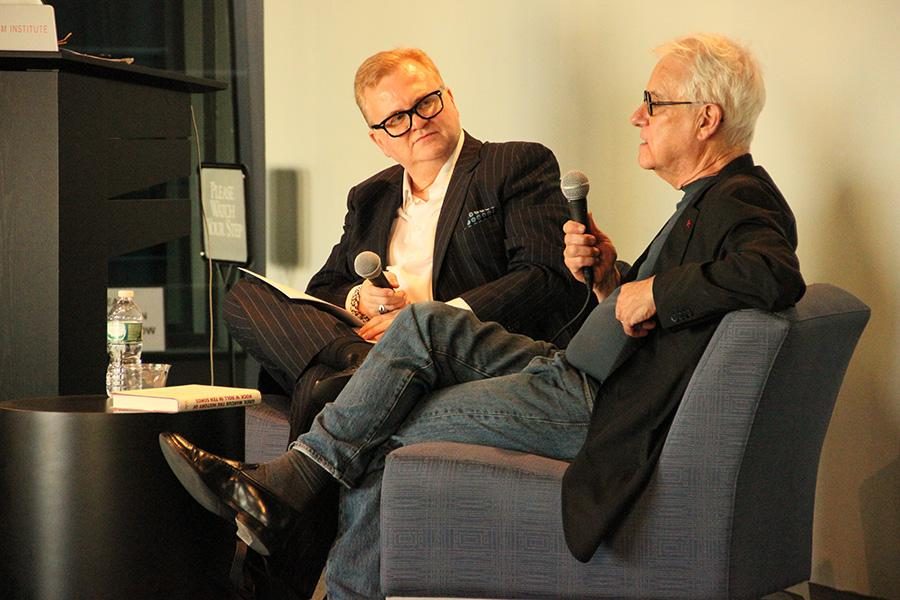Author discusses history of rock ’n’ roll, explores song covers
September 16, 2014
Acclaimed music critic and author Greil Marcus spoke on Sept. 15 at the Arthur L. Carter Journalism Institute about his latest book, “The History of Rock ’n’ Roll in Ten Songs,” in which he follows the many incarnations of the genre. Adjunct professor Charles Taylor moderated the discussion.
In the book, Marcus outlines the history of rock music using less-than iconic songs, including “Shake Some Action” by the Flamin’ Groovies and “Money (That’s What I Want)” by Barrett Strong.
“With the idea that these songs would be so good — that’s how rich and developed [the book] was — that you could find the whole of the music in each of the songs,” Marcus said.
During the discussion, Marcus said his book was inspired by his favorite Neil Young quote.
“[Young] said, ‘Rock ’n’ roll is the cause of country and blues, now blues and country came first, but somehow, rock ’n’ roll’s place in the order of things is dispersed,’” Marcus said. “I love the philosophy of history in that statement.”
Marcus explained why he sometimes cites not only original songs, but covers of them as well. He shared an anecdote about the Cyndi Lauper cover of the Brains’ song “Money Changes Everything.” Marcus said Lauper made the song her own, creating a thrilling stage persona out of it and going so far as to place herself in a trash can when she performed the song live.
Gallatin senior Brie Roche-Lilliott said Marcus’ take on cover songs was interesting.
“What I like about it is how he chooses the songs rather than the artists themselves, and how different people covering the same song can provide such a different meaning,” Roche-Lilliott said.
Marcus also discussed his past distaste over the term rock ’n’ roll, citing its disassociation with the music that had defined it many decades ago. Ultimately, he reconciled with the phrase.
“I was going to go back to the idea that rock ’n’ roll is all popular music with any energy to it at all from somewhere in the ’40s to the present,” Marcus said.
CAS graduate student Sam Behrens said he appreciated Marcus’ explanation of the genre’s importance.
“[The history of rock ’n’ roll] is important in the way he described it at the end: rock ’n’ roll not as a genre but as more of a history of important or energetic music that has something to say,” Behrens said.
A version of this article appeared in the Tuesday, September 16, print edition. Email Alex Bazeley at [email protected].

























































































































































